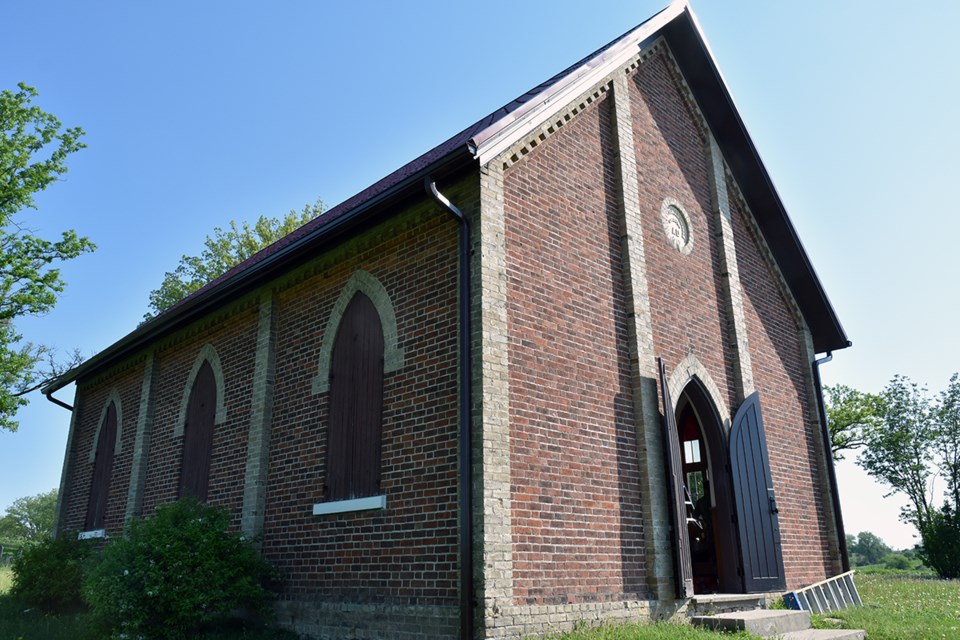As the 149-year-old Auld Kirk church in Bradford West Gwillimbury nears its Old Fashioned Sunday fundraiser on June 10, the BWG Local History Association provides a look back at the building’s long history.
*************************
Auld Kirk simply means old church, a name used by the Gaelic Scots who settled in West Gwillimbury in 1819 and established a Presbyterian church.
The brick building — built in 1869 to replace an older frame structure — is not grand. Its importance lies not in its humble architecture, but in its history: built by pioneers returning from Lord Selkirk’s Red River Colony.
In the late 1700s, the clearances in the Highlands of Scotland forced crofters and small farmers off the land.
One solution was emigration, and, between 1812 and 1815, several waves of settlers arrived at the Red River in Rupert’s Land near Lake Winnipeg. The land grant had been negotiated by Selkirk with the Hudson’s Bay Company.
In addition to the hardships settlers faced in reaching the remote outpost, they found new challenges on their arrival. Harsh weather, crop failures, food scarcity and ongoing conflict with the North West Company, a fur-trading company in direct competition with the Hudson Bay Company, caused many to take up an offer of passage back to Ontario in 1815.
About 140 made the trip — travelling 500 miles to Fort William, where they boarded boats to take the route to Lake Simcoe.
They finally arrived in Holland Landing in September 1815, where many stayed. But once the new survey of West Gwillimbury was completed in 1818, seventeen families took up farms on the newly-opened land.
This was the Scotch Settlement, located south of County Road 88, on the 4th, 5th and 6th concessions of West Gwillimbury.
The settlers soon built a log building to serve as a church and school, which was later replaced by a frame structure, and then the Auld Kirk.
The church has not been in use for regular worship for more than 100 years, although the cemetery — where the earliest grave dates to 1827 — remains open.
In 1957, an Ontario historical plaque was erected on the site. And more than a decade ago, the BWG Local History Association decided to make preservation of the Auld Kirk one of its priorities.
Thanks to research by local historian Donald McGugan, it was discovered the Auld Kirk has been the property of the United Church of Canada since 1925, when the Methodist Church of Canada, the Congregational Union of Canada, and 70 per cent of the Presbyterian Church of Canada entered into a Union.
The United Church sold the building and cemetery to the Town of Bradford West Gwillimbury for the sum of $2.
Since that time, the town has improved security at the site in an effort to curb vandalism, and it recently set aside $10,000 for the replastering and repainting of the interior.
The BWG Local History Association, Auld Kirk Advisory Committee and BWG Heritage Committee successfully lobbied to have the building designated a heritage site in 2017.
The historical association has raised funds for restoration projects that have included a new roof, restored front doors and rear door recreated by Bond Head artisan Bruce Chambers, and now, restored and refinished sash window.
From 2013 to 2017, the proceeds of the history association’s Heritage Home Tours were earmarked for the restoration work.
This year, there will not be a home tour, rather the association is organizing an Old Fashioned Sunday fundraiser at the Auld Kirk on June 10 from 1 p.m. to 4 p.m.
Drop by the site that day at 3380 Line 6, west of 10 Sideroad for an afternoon of music, refreshments and a special guest speaker. Admission is by donation. Bring your own lawn chair.



